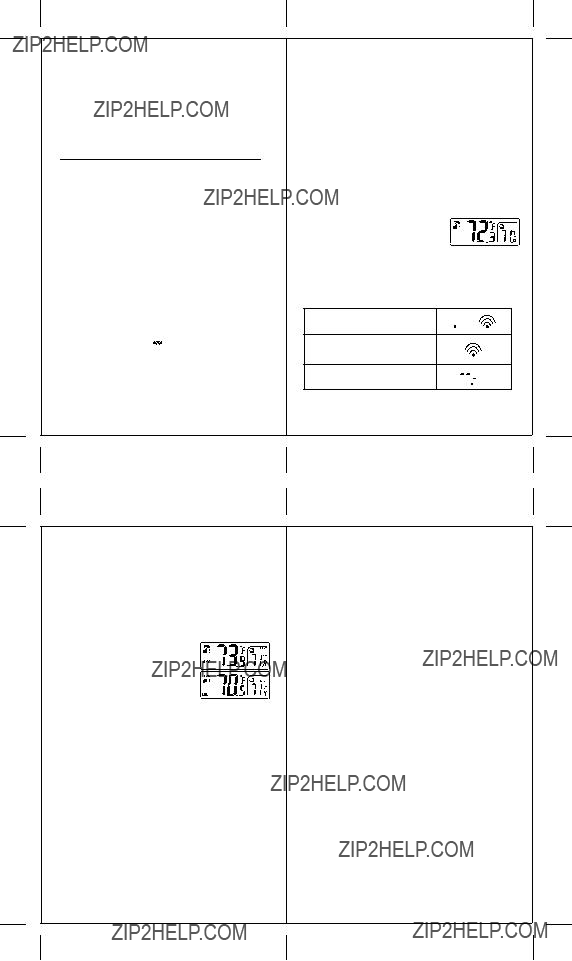The indoor temperature with the icon IN is located next to the remote temperature information section. NOTE: If the indoor or remote temperature goes above or below operating range stated in specifications, the main unit???s display will show dashes ???- - -???
MAXIMUM AND MINIMUM READINGS
The maximum and minimum record of the indoor and remote temperatures will be automatically stored in the memory of the main unit (receiver).
To display the minimum, maximum or the current reading, press the
MEM button.
If no button is pressed for the next 15 seconds, the unit will return to the current temperature display.
To clear the memory, press and hold the MEM button for two seconds and all previously stored readings will be erased.
LOST COMMUNICATION
If the main unit display line for the remote sensor reading goes blank, press and hold the SEARCH button for 2 seconds to begin a new signal search.
If the signal still isn???t received, please make sure that:
???The remote sensor is in its proper location.
???The distance between main unit and remote sensor is not over 100 feet (30meters).
???The path between units is clear of obstacles. Shorten the distance if necessary.
???Fresh batteries are installed correctly in both remote sensor and main unit.
10
If there is still no communication, please perform the following steps:
???Bring the main unit and remote sensor close together.
???Remove four (4) small screws from the back of the remote sensor with a small Phillips screwdriver, and open the battery compartment.
???Remove the batteries from the battery compartment and reinstall them in the same manner. Remote sensor LED indicator will flash showing transmission of the signal.
???Remove the batteries from the main unit and reinstall them in the same manner.
???The remote temperature appearing on the main unit???s display will show that the transmission is being received successfully.
TRANSMISSION COLLISION
Signals from other household devices such as wireless doorbells, home security systems, and entry control may interfere with this product or cause temporary reception interruption. This is normal and will not affect the general performance of the product. The transmission and reception of the temperature readings will resume once the interference subsides.
PRECAUTIONS
This product is engineered to give you years of satisfactory service if handled carefully. Here are a few precautions:
???Do not immerse the units in water.
???Do not clean the units with abrasive or corrosive materials. They may scratch the plastic parts and corrode the electronic circuits.
???Do not subject the product to excessive force, shock, dust, temperature, or humidity, which may result in malfunctions, shorter lifespan, damaged batteries, and damaged parts.
???Do not tamper with the units internal components. Doing so will invalidate the warranty and may cause damage. These units contain no user-serviceable parts.
11



